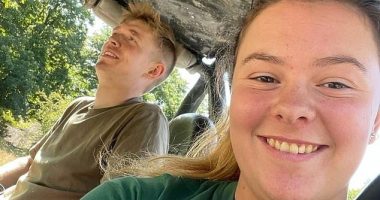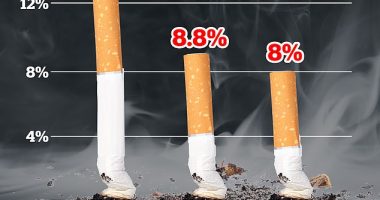That’s why I was so excited when I was invited to hang out with Buettner this February for the opening weekend of Silvestre Hotel & Residences, a boutique hotel in Nosara, Costa Rica, a surf town on the western tip of the Nicoya Peninsula. Buettner has actually nicknamed the town the “gateway destination” to the Blue Zone villages in the inland mountains nearby because it’s easier to access and home to luxury hotels like Silvestre that allow travelers to experience longevity living… but make it chic. Buettner was hosting a series of speeches and events throughout the kickoff weekend, with the intention of shining a spotlight on his longevity findings in one of the places where his work began.
Experts In This Article
A common theme among the longevity lessons Buettner has drawn from his time in the Costa Rica Blue Zone is the major role of the environment. As Buettner noted in one of his speeches: “People here don’t necessarily have better genes, but rather an environment that makes the healthy choice easy or unavoidable.” For example, one of the two provinces in the Nicoya Peninsula, Guanacaste, is the driest part of Costa Rica, which makes it less likely for residents to get respiratory infections. And both provinces are also quite remote, meaning locals aren’t as subject to “the corrosive effects of modernization,” in Buettner’s words. Local drinking water is also rich in calcium and magnesium1, which can support longevity, too.
“People [in Nicoya] don’t necessarily have better genes, but rather an environment that makes the healthy choice easy or unavoidable.” —Dan Buettner, Blue Zones founder and longevity expert
But even though the environment is a crucial factor in the area’s longevity, you don’t have to live in Costa Rica to get some of the Nicoyan Blue Zones effect at home. Throughout my long weekend with Buettner—who truly lives and breathes his findings—I also picked up a few other Costa Rica longevity lessons that you can apply to your own life, no matter where you live. (Just take note: These suggestions haven’t been proven, in and of themselves, to extend a person’s lifespan, but given the folks in the Nicoya Peninsula regularly outlive their peers and engage in these practices, there’s enough correlation to support giving them a go.)
1. Incorporate the “Three Sisters” into your diet
One of the main factors that differentiates the Nicoya Peninsula from the other Blue Zones is its residents’ reliance on the “Three Sisters” of agriculture, which consist of squash, beans, and corn—all native to the area. This particular food combination can be traced back hundreds of years to agricultural practices across Mesoamerica, where indigenous people discovered that the three crops helped to protect and nourish one another as they grew. As it turns out, they make for a similarly beneficial combo when it comes to eating them together, too.
“When you put those three foods together—foods that contain carbohydrates, micronutrients, and niacin—you’ve got all the amino acids necessary for human sustenance,” Buettner said in one of his speeches. In other words? Beans, squash, and corn together provide the body with all nine essential amino acids, forming a complete protein.
Buettner’s advice for getting more of the Three Sisters in your life: Go for a classic Nicoyan breakfast, which is doable even if you’re not in Costa Rica. “People tend to think a healthy breakfast in Costa Rica is an açaí bowl or a smoothie, but a traditional Nicoyan breakfast—which involves corn tortillas, avocados, and gallo pinto (leftover beans and rice from the night before, plus onions, garlic, cilantro, and peppers)—is [more nutritious],” he said.
Not a breakfast person? Go for a cup of beans no matter the time of day. After all, beans are a staple in the diets of centenarians worldwide. In researching foods consumed in the Blue Zones over the years, Buettner has even found that those who eat a cup of beans a day tend to live up to four years longer, on average, than those who don’t. Cool beans!
2. Work natural movement into your day
At Silvestre, Buettner couldn’t stop raving about the wooden staircase in the entryway, which is not only gorgeous but also naturally encourages guests to walk up to the rooftop pool and lounge rather than take the elevator (located farther away). It’s exactly this type of “accidental exercise” that keeps Nicoyans healthy, he told me once as we were climbing the stairs together, because they’re getting their steps in without even thinking about it—no gym required.
Throughout the Nicoya Peninsula, locals might be working on their farms or walking around their villages, but in any case, there’s a good chance they’re moving their bodies without intentionally working out. “People in the Blue Zones are not going to the gym,” Buettner told a group of (shocked) fitness enthusiasts in Nosara. “Americans have engineered physical activity out of our lives, but people here are still cutting with a machete, or grinding corn, or kneading bread. They are moving every 20 minutes or so and they’re unconsciously [exercising] as a result.”
The good news? It’s easier than you think to set up your own life so you’re moving more throughout your day, too. All it takes is a bit of reverse engineering. Just ask Chris Ingham Brooke, the co-founder of Silvestre who moved to Costa Rica from New York to be closer to nature and now lives at the hotel with his family. “We decided to optimize our hotel for health and wellness from the beginning,” he told me. “You’re more likely to go take a walk on the beach if you’re near the beach, for example, and you’re also more likely to experience random collisions that lead to friendships if you have a common area that creates a welcoming atmosphere for that—so we kept all of that in mind when building our hotel.”
Granted, you may not be building a hotel yourself, but you can still design your space and your life in a movement-oriented fashion. Among Buettner’s top home design tips for longevity: Keep a shoe rack by your door with comfortable walking shoes, and design spaces with lower furniture (so you have to use more muscles to get up and down).
You can also hack your schedule by choosing to walk (instead of drive) whenever you can, or taking your calls while strolling (or even pacing) instead of sitting. The key is to make these actions part of your day rather than an additional component—so you’re more likely to do them.
3. Adopt a plan de vida mentality
In the Nicoya Peninsula, grandfathers are often responsible for cooking meat soup on Sundays for the whole family. According to Buettner, this allows them to hold onto what Nicoyans call a plan de vida, or a life plan that’s often translated as “why I wake up in the morning.” Operating with this mentality—the idea that they have a mission to accomplish every day—is often cited as a key contributing factor to their overall longevity.
“Americans tend to lose their sense of purpose once they retire, which is why retirement is the most dangerous year of our adult lives…but that doesn’t happen in Costa Rica,” Buettner explained in one of his speeches at Silvestre. It may seem trite, he added, but research has consistently found2 that those who have a sense of purpose in life tend to live longer than their less purposeful peers (and having a purpose in life is connected with a lower risk of mortality3).
Case in point: Vidal Campo, a 70-something-year-old coffee farmer who spends his days tending to his organic farm, Finca Vidal. Located in the mountains of Nosara, Finca Vidal works with Silvestre to offer guests tours of local Blue Zone villages. On the day I met Campo, he took me around his property, stopping to offer samples of herbs like basil and turmeric along the way. Then we sat down to chat about his day-to-day life—specifically, his take on a plan de vida. “Every day, I wake up happy because I know I have something to do in the field,” he told me. “Maybe I have to cut the grass, or maybe I have to harvest something, but there’s no chance for me to be sad or stressed about anything because I’m already out in the field doing something.”
Certainly, Campo isn’t representative of an entire population, and he’s also not a centenarian just yet—but he’s well past the retirement age (of 62) in the United States, making his mindset especially notable. “I feel so healthy because I’ve lived my whole life up here, breathing the fresh air, eating organic, resting, and working in the field,” he concluded. The takeaway? Even if you aren’t a farmer yourself, it’s possible to weave this plan de vida philosophy into your own life. Take a moment to think about your “why,” and then build your day around that.
4. Get some (sensible) sun
Getting outside sounds like a really obvious longevity lesson, no doubt. But that doesn’t make it any less true. Over the years of researching the Blue Zones, Buettner and his team have found that Nicoyans take in sunshine on a regular basis—whether they’re farming, surfing, or just walking outside—which helps their bodies produce vitamin D4. By contrast, most Americans are either vitamin D insufficient or deficient5, which can lead to all sorts of health issues down the line. (The scientific research here isn’t conclusive, but some studies show an association between vitamin D deficiency and depression, diabetes, autoimmune diseases, and more.)
Your mission: Make a point to get a little sunshine each day—at least 15 minutes. While there’s been conflicting research as to whether and how much sunscreen you should wear when getting sun exposure for the sake of vitamin D, with some studies suggesting sunscreen can limit vitamin D production6, recent research found that the risk of that is low7. And given the high risk of skin cancer from unprotected sun exposure, your best bet is still to wear sunscreen if you’re planning to spend more than a few minutes out in the sun (which, to be clear, you should definitely do).
5. Embrace a more communal lifestyle
Nosara is known for its emphasis on community, a fact that has drawn many—including Ingham Brooke himself—to the surf town in recent years. In fact, his love for community-building is what inspired him to launch the guest speaker series at Silvestre that Buettner kicked off. “It’s my way of tying the community to the property and vice versa,” Ingham Brooke told me of the series, which is open to both guests and locals alike. “We want the guests to connect with the town, and the town to connect with the guests,” he says.
All those connections mirror life in Nosara for locals, whose strong social ties also undoubtedly contribute to their long lifespans. Indeed, ample research has found that maintaining a variety of close bonds can improve your physical health8 and, yes, boost your longevity9.
And there was no shortage of bonding to be found at Silvestre, which Buettner noted on multiple occasions throughout the weekend. “You guys have already figured it out,” he told a group of Nosara locals (and me) over dinner one night. “People in the Nicoya Peninsula put family first. They keep their aging parents nearby, they invest in a partner, they invest in their children, and they belong to a faith,” all of which deepens their social networks. The result? They’re surrounded by emotional support—and better set up to weather the trials of life, and of aging.
Consider that a reason to stop canceling your social plans (even when it feels so tempting), go on more friend dates with those friends-of-friends, or even just take a daily walk in your neighborhood to feel more connected to your community and increase your chances of having a casual conversation. (After all, research shows10 that even interacting with acquaintances whom you barely know—called “weak ties”—can contribute to your social and emotional well-being.)
Sure, all of these strategies for making and maintaining adult friendships take effort, but just remember: Growing your circle could add literal years to your life. And in the meantime, it’s bound to make your current life a lot more fun, too.
Well+Good articles reference scientific, reliable, recent, robust studies to back up the information we share. You can trust us along your wellness journey.
- Rosero-Bixby, Luis et al. “The Nicoya region of Costa Rica: a high longevity island for elderly males.” Vienna yearbook of population research vol. 11 (2013): 109-136. doi:10.1553/populationyearbook2013s109
- Hill, Patrick L, and Nicholas A Turiano. “Purpose in life as a predictor of mortality across adulthood.” Psychological science vol. 25,7 (2014): 1482-6. doi:10.1177/0956797614531799
- Alimujiang, Aliya et al. “Association Between Life Purpose and Mortality Among US Adults Older Than 50 Years.” JAMA network open vol. 2,5 e194270. 3 May. 2019, doi:10.1001/jamanetworkopen.2019.4270
- Naeem, Zahid. “Vitamin d deficiency- an ignored epidemic.” International journal of health sciences vol. 4,1 (2010): V-VI.
- Cui, Aiyong et al. “Prevalence, trend, and predictor analyses of vitamin D deficiency in the US population, 2001-2018.” Frontiers in nutrition vol. 9 965376. 3 Oct. 2022, doi:10.3389/fnut.2022.965376
- Libon, Florence et al. “Sunscreens block cutaneous vitamin D production with only a minimal effect on circulating 25-hydroxyvitamin D.” Archives of osteoporosis vol. 12,1 (2017): 66. doi:10.1007/s11657-017-0361-0
- Neale, R E et al. “The effect of sunscreen on vitamin D: a review.” The British journal of dermatology vol. 181,5 (2019): 907-915. doi:10.1111/bjd.17980
- Reblin, Maija, and Bert N Uchino. “Social and emotional support and its implication for health.” Current opinion in psychiatry vol. 21,2 (2008): 201-5. doi:10.1097/YCO.0b013e3282f3ad89
- Yang, Yang Claire et al. “Social relationships and physiological determinants of longevity across the human life span.” Proceedings of the National Academy of Sciences of the United States of America vol. 113,3 (2016): 578-83. doi:10.1073/pnas.1511085112
- Sandstrom, Gillian M, and Elizabeth W Dunn. “Social Interactions and Well-Being: The Surprising Power of Weak Ties.” Personality & social psychology bulletin vol. 40,7 (2014): 910-922. doi:10.1177/0146167214529799
Source: Well and Good








